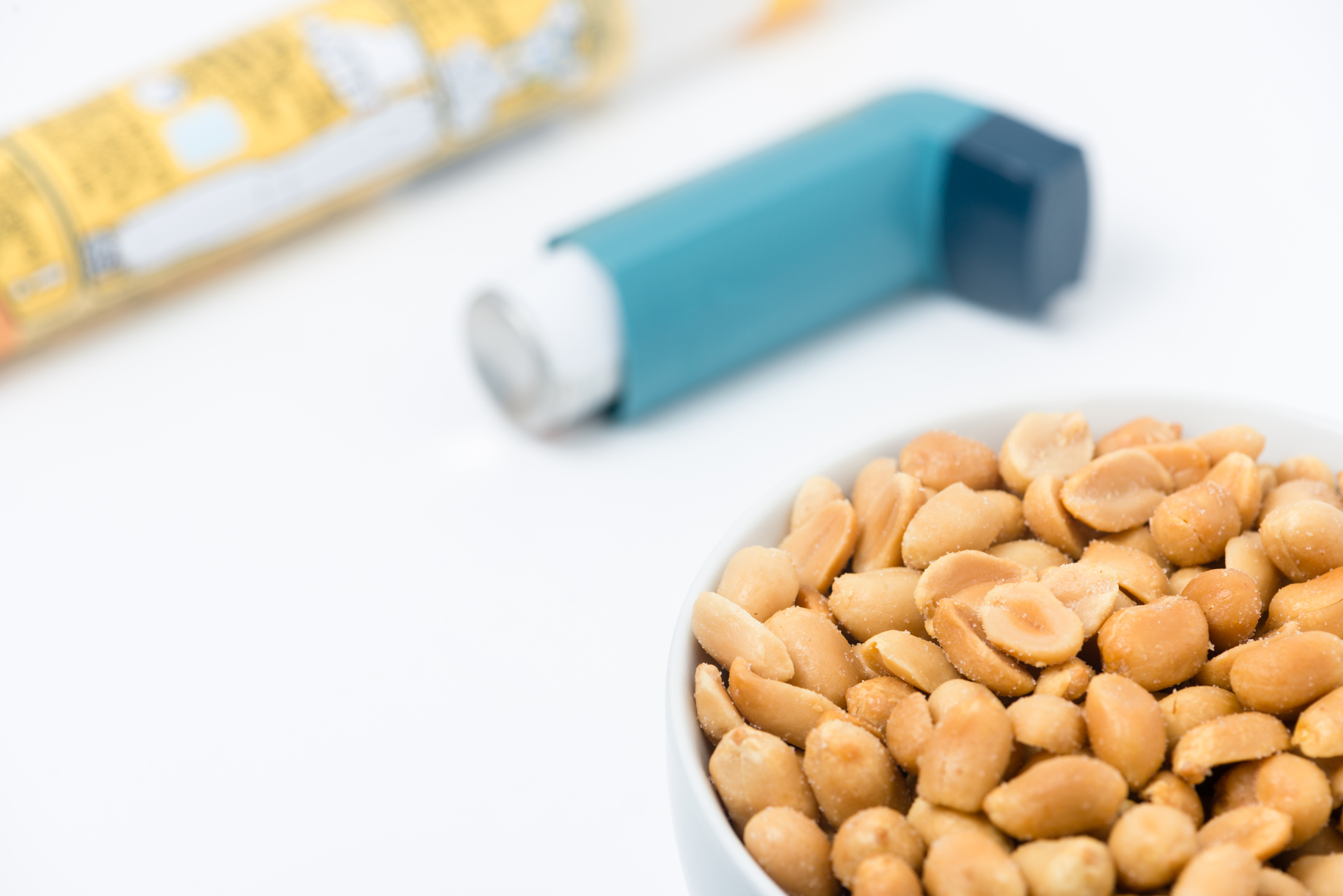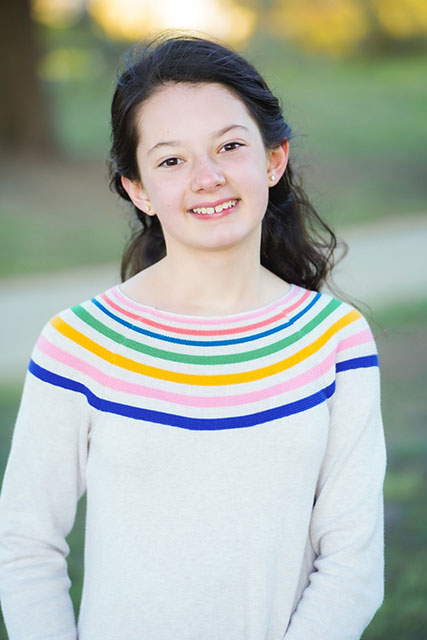
About 20 million people in the U.S.—including four million children—have food allergies. Now, there's a new way to reduce their risk of severe allergic reactions. A study published in the New England Journal of Medicine reports that the drug omalizumab, or Xolair, allows people with food allergies to tolerate higher doses of allergenic foods before developing a reaction after an accidental exposure. It also leads to milder reactions if they are exposed.
The drug was originally approved more than two decades ago to treat allergic asthma. But because of this new study and other data, the U.S. Food and Drug Administration expanded the approval of Xolair on Feb. 16 to include treatment of food allergies in anyone one year or older. It's now the first drug approved to treat allergies to multiple foods.
Anabelle Terry, a 12-year old with severe peanut and tree nut allergies, experienced that benefit firsthand as a participant in the trial. While participating in the study, she ate half a cupcake while with friends that she thought was nut-free but had made been made with cashew flour. Within about an hour, her stomach and throat started to hurt and her lips tingled, so she thought she was having an allergic reaction and went home. Her mom gave her an antihistamine, which was enough to quell her symptoms. Before Xolair, if she ate even a tiny amount of peanuts or tree nuts, she would generally need a shot of epinephrine, which is an emergency treatment for an allergic reaction, and a visit to the doctor. “I did notice a difference—I didn’t react as badly as I thought I would have,” Terry says. “I only had half, but it was a big cupcake, and it was amazing to see that even though I accidentally ate some, I was okay.”

Xolair does not cure food allergies, so people must continue to avoid allergy-causing foods by reading labels and asking how food is prepared. But people now "have another layer of protection in case of accidental exposure," says Dr. Sharon Chinthrajah, associate professor of medicine at Stanford University School of Medicine and co-lead of the study.
How Xolair works to fight allergic reactions
The drug works by mopping up something called immunoglobulin E (IgE) cells, which activate the immune cells responsible for inflammation and allergic reactions. “I think of the drug as a sponge that takes allergic antibodies out of circulation,” says Chinthrajah. It was this mechanism that led to Xoalir's original approval in 2003 for allergic asthma, since IgE cells play a role in that condition as well. “There were suggestions that the drug should work in food allergy too, but no study until this one demonstrated that to the level required by the FDA to add it to the label, says Dr. Robert Wood, director of pediatric allergy, immunology, and rheumatology at Johns Hopkins Children’s Center and the principal investigator of the study.” In fact, because of the way the drug blocks IgE, it “may be more applicable to food allergies because asthma has a lot of different triggers, but food allergies are pretty much an IgE-driven reaction.”
What the new study shows
The study, which was largely funded by the National Institute of Allergy and Infectious Diseases, included 177 children from ages 1 to 17 at 10 different sites in the U.S. The participants were randomly assigned to receive Xolair as an injection either every two weeks or every four weeks, depending on their body weight and levels of IgE (a proxy for how severe their food allergies are), or a placebo. All of the participants were allergic to peanuts and at least two other foods such as tree nuts (cashews, walnuts, and hazelnuts), milk, eggs, or wheat. After about four months of receiving the injections, the kids were given high levels of peanut or other food allergens—much higher than doses they might encounter by accidentally taking a bite of food containing them. Of those who took Xolair, 67% were able to tolerate the higher dose of peanut without a severe allergic reaction, compared to 7% of those getting placebo. The breakdown was similar for the other allergens.
“Over half [of the participants] could eat a lot of the foods they were allergic to,” says Dr. Robert Wood, director of pediatric allergy, immunology, and rheumatology at Johns Hopkins Children’s Center and the principal investigator of the study. “More than 50% could eat the equivalent of 16 peanuts with no reaction.” Among the remaining half, about 15% experienced allergic reactions even at small doses of exposure, but all of the reactions were milder among the Xolair group than the placebo group. It's not clear how long the drug blocks IgE activity, but doctors anticipate that people will have to continue getting the shots to lower their risk of severe reactions.
How to use Xolair for food allergies
For Anabelle, the drug provides a sense of security. “I’ll be able to try new things and do some things that I wasn’t able to before," she says. "I love traveling even more now because I don’t always have to worried about whether a new food is safe. I’m still cautious, but more free to experience things.”
Xolair isn't an emergency treatment. It’s designed to be a maintenance therapy that keeps the immune system in check for as long as people take the medication, so that if someone is accidentally exposed to an allergy-causing food, their reaction will be dampened and not life-threatening. The first few doses might be given at the doctor’s office to make sure people don’t have adverse reactions to the shot, but parents give subsequent doses to children at home. Adults can also give the shots to themselves.
To work, a person has to keep taking the shots. That can get expensive: A spokesperson for Genentech, which makes the drug, says the injections for food allergies will cost the same as those for asthma, which amounts to $2,900 for children and $5,000 for adults each month. It’s not clear yet whether insurers will cover Xolair for treating food allergies, but many do cover the drug for asthma. For the uninsured, Genentech offers a patient assistance program.
Anabelle's parents are still discussing with their allergist how Xolair might fit into her life. Anabelle completed the trial in 2022 and has not taken the drug for two years. “I would be willing to go back on it,” she says. “Maybe with more treatment, it could become even less severe and make me less stressed about food.”
Correction, Feb. 26
The original version of this story misspelled a researcher's name. She is is Dr. Chinthrajah, not Chinthraja
More Must-Reads From TIME
- The 100 Most Influential People of 2024
- How Far Trump Would Go
- Scenes From Pro-Palestinian Encampments Across U.S. Universities
- Saving Seconds Is Better Than Hours
- Why Your Breakfast Should Start with a Vegetable
- 6 Compliments That Land Every Time
- Welcome to the Golden Age of Ryan Gosling
- Want Weekly Recs on What to Watch, Read, and More? Sign Up for Worth Your Time
Contact us at letters@time.com